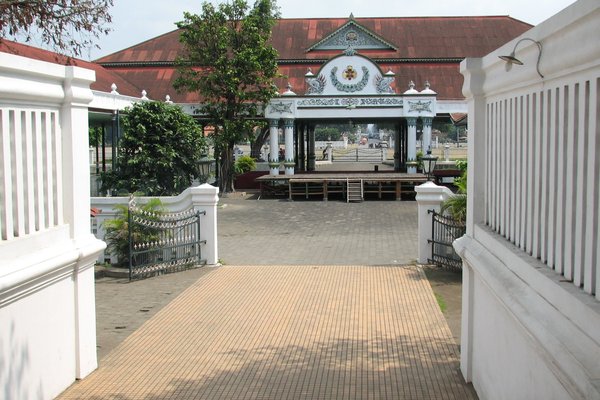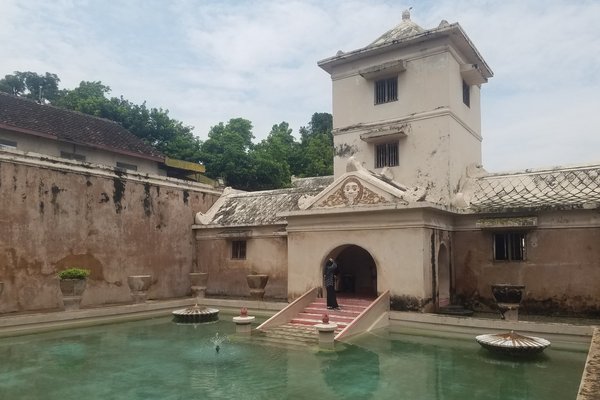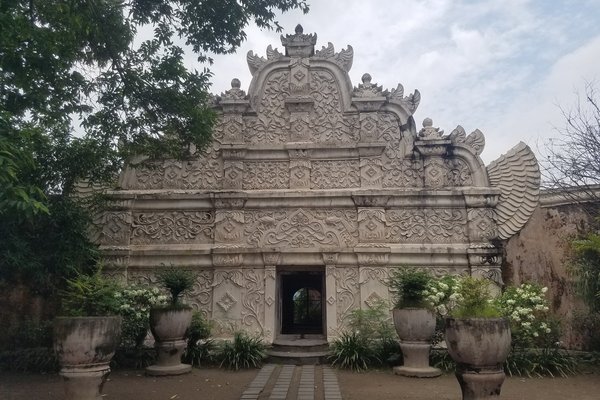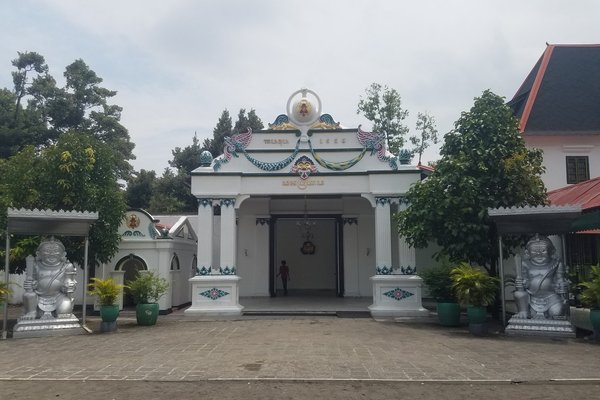Indonesia
Yogyakarta
The Cosmological Axis of Yogyakarta and its Historic Landmarks comprises a traditional Javanese townscape centered around the Kraton (the Sultan’s Palace) and is associated with rituals.
The main town elements such as markets and the Great Mosque were placed along an axis between Tugu Pal Putih (a monumental pillar facing the peak of Mount Merapi) and the southern town border at Panggung Krapyak. According to Javanese Hindu-Buddhist beliefs, the total was seen as a miniature representation of the cosmos.
Community Perspective: the focus of a visit should be the Kraton Complex and the Taman Sari Water Castle, fine examples of traditional Javanese architecture.
Site Info
Official Information
- Full Name
- The Cosmological Axis of Yogyakarta and its Historic Landmarks (ID: 1671)
- Country
- Indonesia
- Status
-
Inscribed 2023
Site history
History of Yogyakarta
- 2023: Inscribed
- Inscribed
- 2022: Incomplete - not examined
- As The Cosmological Axis of Yogyakarta and its Historic Landmarks (for 2022)
- 2017: Revision
- Includes former TWHS Yogyakarta Palace Complex (1995-2015)
- Type
- Cultural
- Criteria
- ii
- iii
Links
- UNESCO
- whc.unesco.org
All Links
UNESCO.org
- whc.unesco.org — whc.unesco.org/
Community Information
- Community Category
- Urban landscape: Asian
Travel Information
Recent Connections
-
Austronesian cultures
Javanese
-
Fusion
Crit ii: "an important interchange of h… -
Microcosm
"the connection of the natural and macr…
Connections of Yogyakarta
- Geography
-
-
Linear inscriptions
"six kilometre north-south axis"
-
- Trivia
-
-
Cultural sites closely connected to volcanoes
"Yogyakarta is located in close proximity to the active volcano of Mount Merapi, which had its last major eruption in 2010, which created ash rain and flooding in the city" (ab ev)
-
- History
-
-
Fusion
Crit ii: "an important interchange of human values and ideas between different belief systems related to Javanese animism and ancestor worship, Hinduism and Buddhism from India, Sufi Islam from either India or the Middle East, and Western influences"
-
- Damaged
-
-
Destroyed or damaged by Earthquake
"In 2006, a severe earthquake affected Yogyakarta with many lives lost and considerable damage to the nominated property." (AB ev)
-
- World Heritage Process
-
-
Extended from original TWHS
Originally only the palace complex was included.
-
- Religion and Belief
-
-
Notable mosques
Great Mosque Complex -
Ancestor Worship
"interchange of human values and ideas between different belief systems related to Javanese animism and ancestor worship, Hinduism and Buddhism from India, Sufi Islam from either India or the Middle East, and Western influences" (OUV)
-
- Human Activity
-
-
Austronesian cultures
Javanese
-
- Constructions
-
-
Pillars
Tugu Pal Putih
-
- Timeline
-
-
Built in the 18th century
"The location for the Kraton and the axis was selected by the Sultan Mangkubumi in 1755" (AB ev)
-
- WHS Hotspots
- WHS Names
-
-
Microcosm
"the connection of the natural and macrocosmic microcosmic worlds" (OUV)
-
News
No news.
Recent Visitors
Visitors of Yogyakarta
- AC
- Adrian Turtschi
- Afshin Iranpour
- AK
- Alberto Rodriguez Gutierrez
- Alejandro Lau
- Alexander Parsons
- Alex Goh
- Alex Marcean
- AlexSchedel
- Allegrazwindow
- A. Mehmet Haksever
- Ammon Watkins
- Artur Anuszewski
- ashombob
- Atila Ege
- Balu93
- basementonline
- Bernard Joseph Esposo Guerrero
- Bill Maurmann
- Bin
- c82wc1
- Carlo Sarion
- Celina Nanbara
- Chalamphol Therakul
- chenboada
- Cheryl
- Chole Ross
- Christine
- christof
- Christravelblog
- Claire Bradshaw
- Clyde
- Corinne Vail
- Csaba Nováczky
- cutecid
- Cyberczar
- CynthiaSam
- czesioszpachelka
- Daniel Chazad
- Danieljbromberg
- Danny L
- Delphine Delaunay
- Dennis Nicklaus
- Dimitar Krastev
- Dwikusuma
- Dylan
- Elis
- Elisabeth Fransisca Situmorang
- eljx1988
- Els Slots
- Engielle
- Erfe91
- Eric Lurio
- Erik Jelinek
- Errol Neo
- Fan Yibo
- Fernweh
- Francky D'Hoop
- Frédéric M
- Frederik Dawson
- Garrett
- George Gdanski
- Gernot
- giloudepuertorico
- Hadrianus
- Harald T.
- Harry Mitsidis
- H Beswick
- henryjiao18
- inomusay
- IreneKD
- Ivan
- ivantham
- Jacob Otten
- Jan-Willem
- Jarek Pokrzywnicki
- Javier Coro
- Jeanne OGrady
- Joel on the Road
- Jon Opol
- JoStof
- Joyce van Soest
- jxrocky
- Kedp2023
- KeithBailey
- Ken DJ
- Kevin247
- ko9757
- Krijn
- Laurine
- Liamps91
- lichia
- Lithobates
- Loic Pedras
- Luboang
- Lucas Del Puppo
- Lucio
- Ludvan
- Lukasz Palczewski
- Luke LOU
- Maciej Gil
- Mahuhe
- Maja
- Marcobrey
- Marton Kemeny
- Mateusz
- Matthewsharris
- Michael Turtle
- Mikko
- Miloš Tašković
- Mkandasa
- MMM
- Monica Tasciotti
- Morodhi
- Naim Y
- NH1984
- Niall Sclater
- Nick Kuzmyak
- Nicolas
- Patrik
- Paul Schofield
- Pchxiao
- pete_simms
- Philipp Leu
- Potsdamer
- Priyaranjan Mohapatra
- Ralf Regele
- Randi Thomsen
- ReallyDeepThoughts
- Reza
- Riccardo Quaranta
- Rick Ohm
- Rob Wilson
- Roel Sterken
- Roger Ourset
- Roman Bruehwiler
- Sandra!
- S. Anril Tiatco
- Sclowitz
- Sergio Arjona
- Shandos Cleaver
- Simonf
- Slavi
- Ssong.x
- Stanislaw Warwas
- Sutul
- Svein Elias
- Szabolcs Mosonyi
- Szucs Tamas
- Tamara Ratz
- Tammy Gouldstone
- Taotao Chen
- Tatiana Nikulnikova
- Tevity
- Thanneermalai L
- Thomas Buechler
- Thomas van der Walt
- Tikhon Puliaev
- tony0001
- Tony H.
- triath
- Truls Brekke
- Twobaconsandaboston
- Vanessa Buechler
- Vernon Prieto
- Vincent Cheung
- voyager
- Waxwing
- Westwards
- Wojciech Fedoruk
- wolfboy
- Xiquinho Silva
- Yi Han Goh
- Yongcheng Liu
- Zoë Sheng
- Zos M
Community Reviews
Show full reviews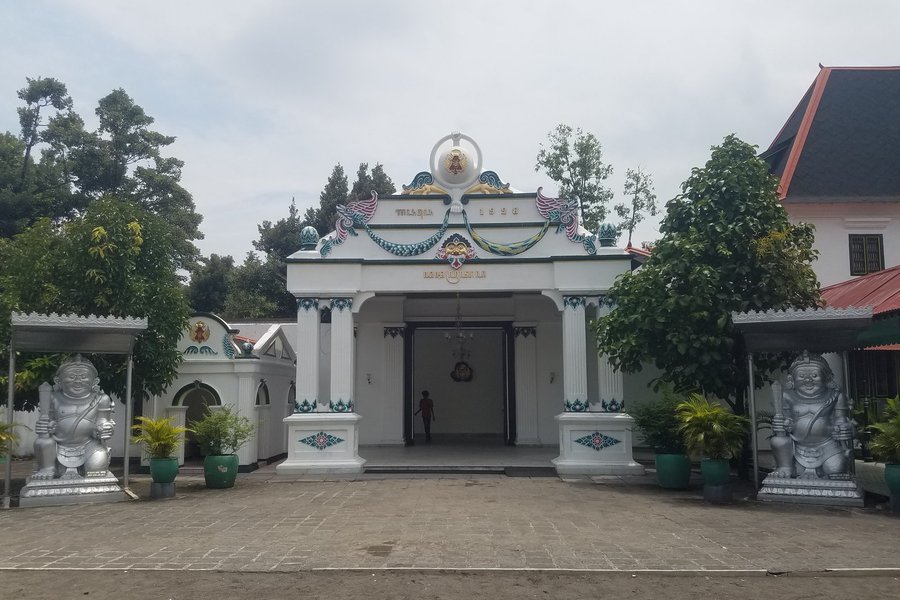
We spent four days and four nights in Yogyakarta in February 2023. We arrived in the evening, having spent the day on trains from Bogor (Kebun Raya Bogor TWHS ).
Our first day was spent visiting the Kraton complex and the surrounding area. We got in just on time for an impressive traditional percussion show. Their music is captivating and quite unique. This was followed by a boring puppet show that we didn't watch until the end. The Kraton is very large and rather pretty. However, it's a little difficult to understand what you're visiting, as there's very little interpretation. There is a museum on site, but it's only in Indonesian and seems to focus more on the life of the sultan (they even display his kitchen utensils), than on Javanese architecture.
As we exited the Kraton from the rear, we were approached by a woman. She led us to a traditional puppet workshop. These are hand-cut in intricate patterns from thick leather, then painted. The result is a magnificent work of art. She then led us to a batik workshop. These traditional paintings on fabric are also magnificent and delighted my friend. After another stop at a coffee shop and a tip, the lady left us and we continued on our way to the Taman Sari Water Castle. This was the highlight of our visit to Yogya. Javanese art and architecture are at their most visible and remarkable. The west gate of the castle is exceptional (picture). We rounded …
Keep reading 0 comments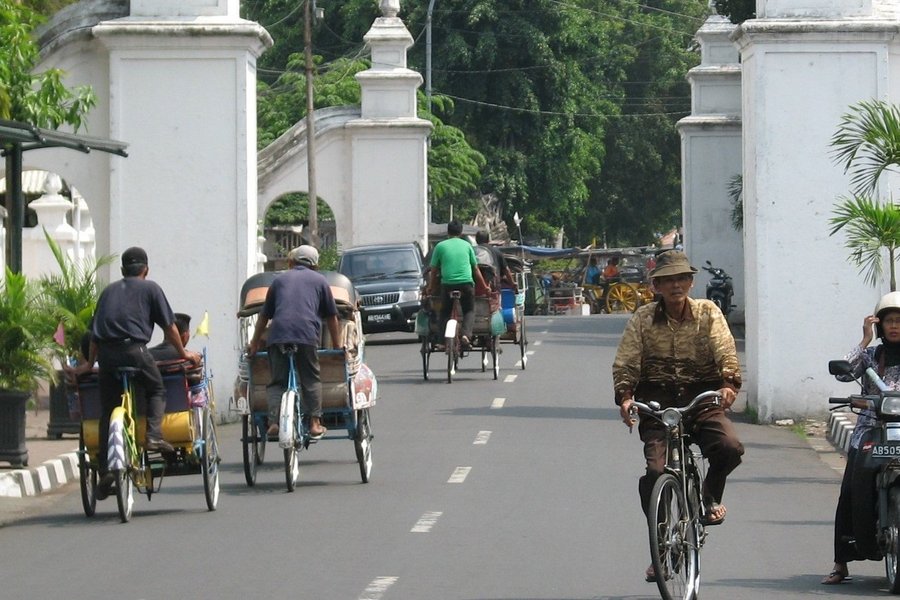
The site was a bit of a challenging visit, mostly because of the palace. A significant portion of the front area was under renovation, which made navigating the entrance quite confusing. There was no clear signage and at the ticket purchase point someone dressed as Spiderman along with a local tried directing us to an alternative entrance, it all felt a bit like a fever dream. We did manage to get the right tickets in the end.
Once inside the palace grounds, we saw the main pavilions at the back and the museum. But as Frédéric M mentions the lack of info made it difficult to understand the relevance of the things on display. Similarly as we left the palace grounds there were lots of people offering to take visitors to batik workshops, which seemed to be quite a common thing all over Yogya. We got taken to one from someone hanging around in a 7 Eleven at one point.
We also went to the Taman Sari Water Castle. As others have said, this was a lot better than the palace. Nothing spectacular, but it was nice to wander around and get a bit lost in the grounds and its surrounding streets/pathways.
As for the site itself, you really don’t need more than a few hours to see the Kraton area and it’s quite underwhelming. But all in all Yogyakarta is a fascinating city and worth a couple of days. I can’t quite explain why that is …
Keep reading 0 comments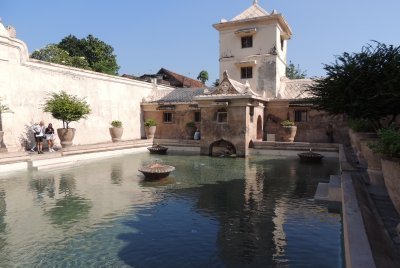
Visit date(s): Wednesday, September 20, 2023. The same week, possibly even the same day, that the site was inscribed!Nearby sites on trip: Borobudur, Sangiran Early Man Site, Prambanan Overnight location: We left Borobudur that morning and stayed 3 nights just NE of Pasar Beringharjo after.
Location(s):
- Parts of outer walls, gates and fortifications. (We ate dinner inside the walls one night, so had an opportunity to see another way through the maze.)
- Inner complex of the Kraton palace and its squares.
- Tamansari royal garden complex. (See photo.)
- Northern cosmological axis including Jl Malioboro.
- Beringharjo market.
Travel method(s): Taxi, walking, bicycle-rickshawTravel duration: Short, ~ 2 km or less per transferVisit duration: AfternoonOUV: Worthy. Good midsized site. Variety of structures. Culturally interesting.
Best of:
- Tamansari.
- The walk along Malioboro, especially in the evening. It is a relatively wide, formal street, that does have some new buildings, but also very nice shops, including batik and regional specialties. In the evenings the road itself wasn’t busy, but there were people out everywhere.
Worst of:
- Trying to get between the Kraton and Tamansari, through the maze of alleyways. Do not try trusting a compass as most roads seem to curve around.
- (Also, bicycle-rickshaws are not sized for people over 1.7 m to share.)

I visited this tentative WHS in August 2018. I spent two nights here (1 day to visit Prambanan and Sangiran WHS) and dedicated one day to visiting some of the locations which make up this tentative WHS. What struck me most were the mostly intact city walls (top left photo) and colonial buildings which were still in very good condition compared to similar ones in Jakarta. Some highlights worth mentioning were the Vredeburg Fort, the Bank Indonesia building and the Gili Golong Monument at the central axis of both pathway locations.
The OUV probably lies in two main 18th century buildings of Yogyakarta - the Kraton Complex and the Taman Sari Water Castle - both linked to the Sultanate of Yogyakarta. The Kraton is an Asian palace complex in traditional Javanese architecture style. There are two bangsal or pavilions made of teak wood with floral design ceilings (bottom left photo). The main bangsal and the inner courtyard can only be viewed from outside. In a way the kraton atmosphere reminded me a bit of the Sitorai Mokhi-Khosa Palace in Bukhara, Uzbekistan even though that had European influences.
The Taman Sari Water Castle is the former royal garden of the Sultanate of Yogyakarta and had several functions, such as a resting area, a workshop, a meditation area, a defense area, and a hiding place. Taman Sari consisted of four distinct areas: a large artificial lake with islands and pavilions located in the west, a bathing complex in the centre, …
Keep reading 0 comments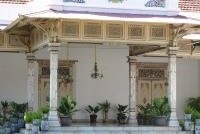
The Kraton of Yogyakarta dates from the mid-18th century. It is a prime example of Javanese palace architecture. The complex belongs to the Sultanate of Yogyakarta.
Typical for the architecture is the use of a pendopo, a tall and large pavillion-like hall that is the focus of ceremonial occasions.
The main gate is guarded by two statues of giants, a good one and a bad giant. The grounds also hold some (Dutch) colonial style buildings.
A bit confusingly, there are two entrances that will take you into two different parts of the palace. The one on the south side is the major gateway. Entrance costs only a few thousand rupiah. Allow an hour or so for a visit.
The style of Indonesian palaces, like this one and the ones in Solo which I also have visited, is very distinctive. I don't think there are any sites on the List that can compare to this. Furthermore, there aren't even any (contemporary) Asian palaces inscribed. So my conclusion would be that this would be a worthy site to enlist as a WHS.
Keep reading 0 comments
